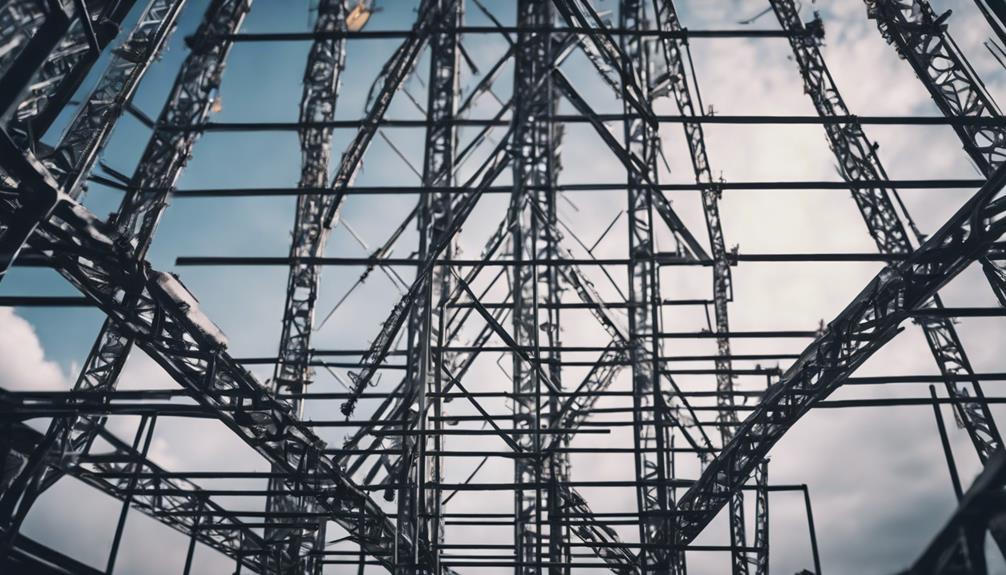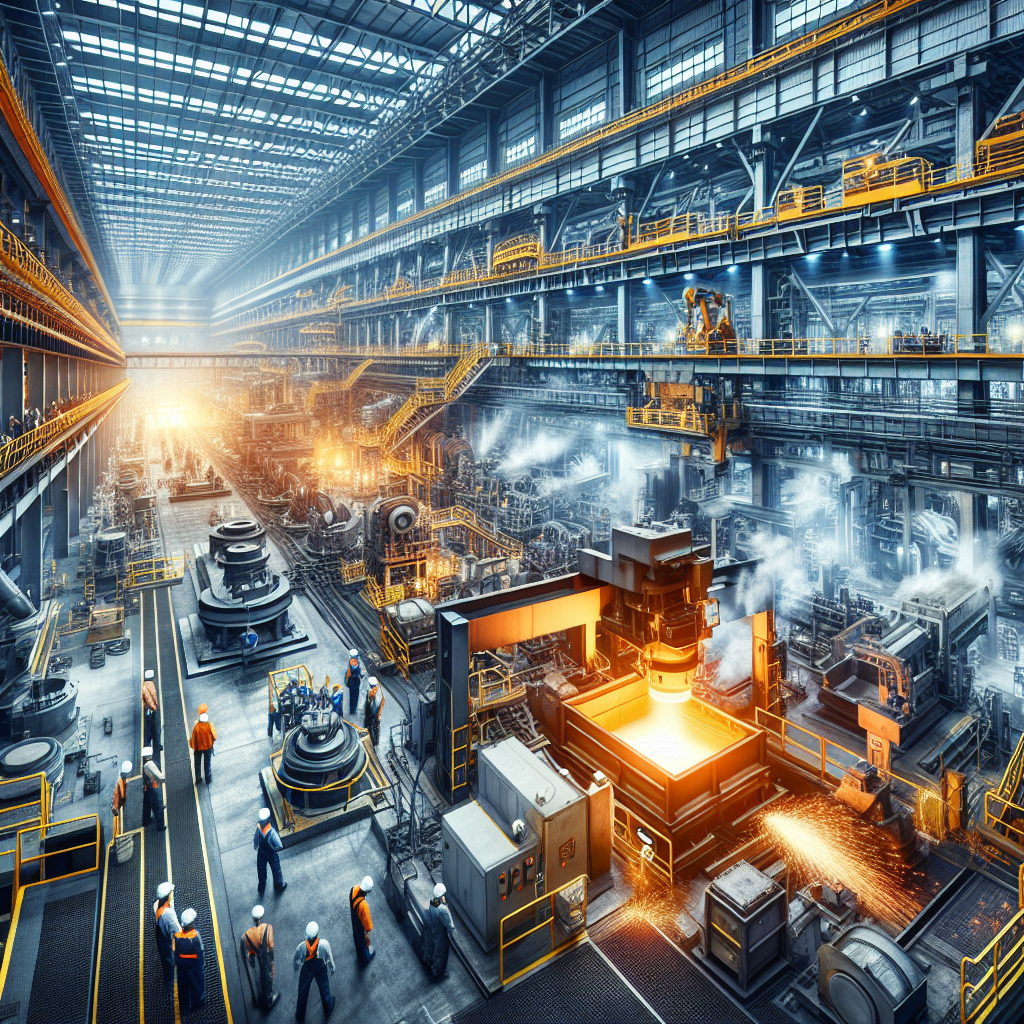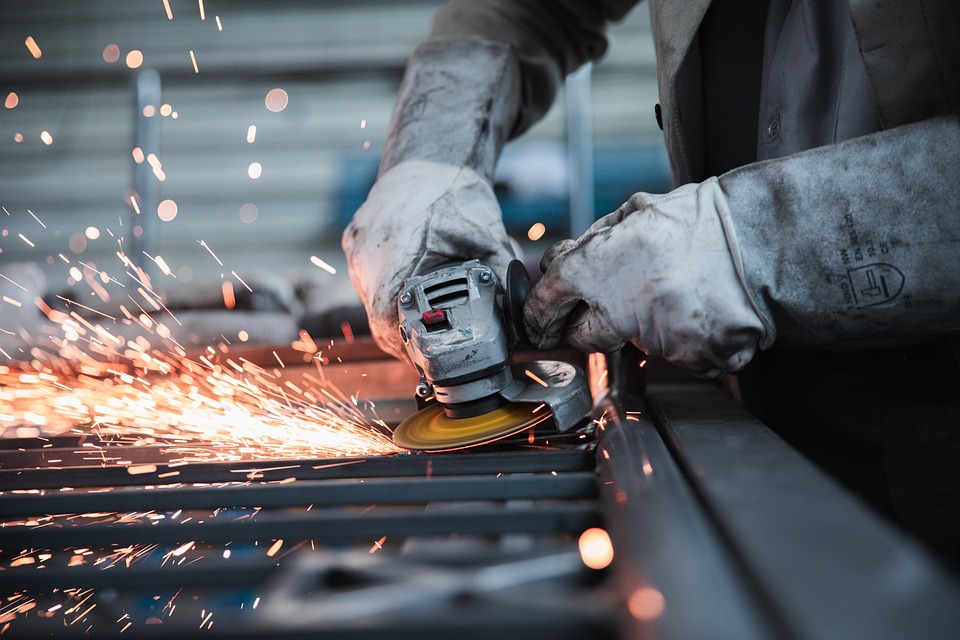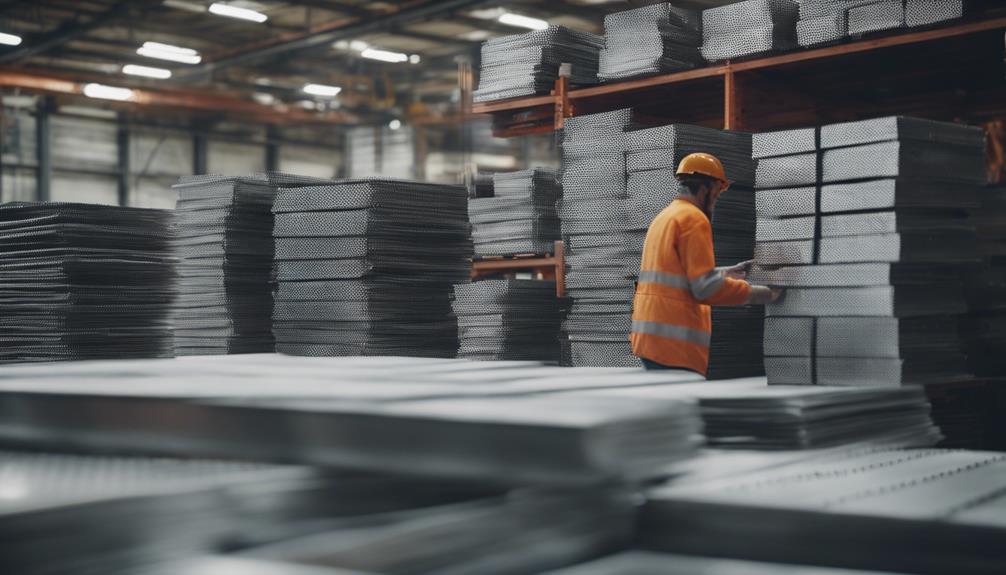Steel beams, including I-Beams, H-Beams, and W-Beams, are highly durable and known for their high strength-to-weight ratio. They can support heavy loads and are resistant to bending, making them essential for construction and industrial projects. The diverse shapes and support types of steel beams offer flexibility and stability in various applications. Understanding the advantages of steel beams over other materials is vital for selecting the right option for your project needs. Further exploration of the topic can provide insights into the different types and applications of steel beams.
Key Takeaways
- Steel beams offer high strength-to-weight ratio for structural integrity.
- They are durable, long-lasting, and resistant to bending, warping, and corrosion.
- Steel beams support heavy loads and can be easily customized for specific needs.
- Commonly used in construction, bridges, industrial equipment, and architectural designs.
- Available in various types, shapes, and sizes to suit different project requirements.
Types of Steel Beams Classification
Steel beams are categorized into different types, including I-Beams, H-Beams, W-Beams (Wide Flange Beams), Channel Beams, and L-Angle Beams, based on their specific designs and intended applications. Among these types, W-Beams, or Wide Flange Beams, are particularly popular in construction due to their wider flanges and structural stability. W-Beams offer better load distribution capabilities and are resistant to bending, making them suitable for various structural applications. In construction projects, these beams are commonly used in building frames, bridges, columns, and long-span structures to provide the necessary support and structural integrity. The unique design of W-Beams ensures that they can efficiently handle the loads and forces typically encountered in construction projects, enhancing overall safety and stability.
Steel Beam Cross-Section Variations
Within the domain of structural engineering and construction, the diverse range of cross-sectional shapes available for steel beams offers engineers a spectrum of options to optimize beam performance for various applications. Steel beams come in shapes like rectangular, square, circular, T-shaped, and L-shaped, impacting load-carrying capacity, structural stability, and resistance to bending and torsional forces. The geometric shape of steel beams plays an important role in load distribution and overall structural behavior. Specific cross-sectional shapes such as I-beams, H-beams, W-beams, Channel beams, and L-angle beams are tailored for different applications, providing advantages in load distribution, stability, and structural support. Engineers carefully select the appropriate cross-sectional shape to make sure the beams effectively meet the requirements of the construction project.
Steel Beam Support Types
The selection of appropriate support types for steel beams is paramount in ensuring structural stability and efficient load distribution. Steel beam support types, such as fixed, free on one end, stuck on the other, and free on both ends, play a vital role in influencing beam stability and load distribution. Proper support selection prevents rotation, ensuring the beam's load-bearing capacity. These support types are chosen based on project requirements and design considerations to maintain structural integrity. Beam reactions, which transfer loads to supports, are essential for determining stability and ensuring structural safety. Different support configurations impact beam span, load distribution, and overall structural behavior, highlighting the significance of selecting the right support types for steel beams.
Steel Beam Geometry Options
When considering structural design, the geometry of steel beams plays a pivotal role in determining their load-carrying capacity, resistance to bending, and torsional forces. Steel beams are available in various cross-sectional shapes such as rectangular, square, circular, T-shaped, and L-shaped, each influencing beam performance and structural behavior differently. The selection of a specific cross-sectional shape directly impacts load distribution efficiency, structural stability, and overall beam performance in construction applications. Engineers carefully choose the geometry of steel beams based on specific design requirements to guarantee peak load-carrying capacity and resistance to bending and torsional forces. Understanding how different cross-sectional shapes affect beam behavior is essential in achieving the desired structural integrity and performance in construction projects.
Common Steel Beam Applications
Steel beams find widespread application in various construction projects, serving as vital components for building frames, bridges, and industrial structures. These beams are used to provide structural support and offer a high strength-to-weight ratio, making them ideal for withstanding heavy loads in construction projects. Due to their versatility, steel beams can be customized into various sizes and shapes, allowing architects and engineers to meet specific design requirements. Whether in commercial buildings, residential homes, or infrastructure projects, steel beams play an important role in ensuring the stability and integrity of the structures. Their durability and load-bearing capacity make them indispensable in modern construction practices.
Steel Beam Failure Analysis
In the domain of construction engineering, analyzing the factors behind structural failures in steel beams is a meticulous process that demands a keen eye for detail and a deep understanding of material behavior. Steel beam failure analysis involves investigating various aspects such as overloading, material defects, poor design, and corrosion. These factors can greatly contribute to the weakening and eventual failure of steel beams in structures. Structural engineers employ advanced techniques like finite element analysis to assess the failure modes and mechanisms present in steel beams. By understanding the patterns of failure, design practices, material selection, and maintenance strategies for steel beams can be improved, ensuring the safety and reliability of structures across different industries.
Steel Beam Supports and Reactions
Employing various support configurations and reactions is essential in ensuring the stability and load distribution of steel beams in construction projects. Steel beam supports, such as fixed, free, and stuck configurations, play a critical role in distributing loads and maintaining structural integrity. Reactions within these supports help transfer loads and prevent unwanted beam rotation, contributing greatly to the overall stability of the structure. The selection of the appropriate support type depends on factors like beam span, load capacity, and specific design requirements. Different support configurations impact beam stability and load distribution differently, emphasizing the importance of making informed decisions based on structural needs. The geometry of steel beams, coupled with strategic support choices, is crucial in guaranteeing structural stability and peak performance.
Selecting the Right Steel Beam
Selecting the appropriate steel beam size is vital in ensuring structural stability and meeting the load requirements of construction projects. Steel beams are available in various sizes such as 3 x 5.7#, 4 x 7.7#, 6 x 17.25#, and 8 x 23#, catering to different structural project needs. The weight per foot of steel beams ranges from 5.7 lbs to 35 lbs, providing options for varying load requirements. ASTM A992 / A572-50 are standard specifications for structural steel beams, ensuring high strength and weldable characteristics. Steel beams with tapered flanges and a textured blue-grey finish are suitable for construction projects requiring load-bearing support. Understanding the chemical composition elements in steel beams like Carbon, Manganese, Phosphorus, Sulfur, and Silicon is essential as they impact material properties and performance.
Where to Find Steel Beams for Sale
When seeking steel beams for purchase, exploring reputable suppliers such as Metals Depot can provide a diverse selection of sizes and types to meet various construction needs. In the construction industry, having access to a wide range of steel beams is critical for ensuring structural integrity and meeting design specifications. Metals Depot offers various Types of Steel Beams, including wide flange steel beams, standard I beams, and junior beams, all available in different sizes to accommodate different project requirements. These beams are typically made from ASTM A992/A572-50 material, known for its specific mechanical properties suitable for a variety of applications. Customers can easily select the right beam based on weight per foot and even opt for custom cutting services for tailored solutions.
Frequently Asked Questions
How Much Is a Steel Beam?
The price of a steel beam can vary based on factors such as size, type, and weight. For accurate estimates, it is advisable to request a quote from suppliers or consult pricing guides specific to the desired specifications.
Are Steel Beams Cheaper Than Wood Beams?
Steel beams generally offer long-term cost savings due to their durability, strength, and low maintenance requirements compared to wood beams. While initial costs may be higher for steel, the investment in steel beams can often provide greater value over time.
How Much Is a 30 Foot Steel Beam?
The cost of a 30-foot steel beam can vary depending on factors like material grade and weight per foot. Prices typically range from $500 to $1,500. Proper installation and support are essential for structural stability.
What Size Steel Beam Do I Need to Span 30 Feet?
To span 30 feet effectively, selecting the appropriate steel beam size is essential. Factors like load requirements, safety regulations, and structural integrity considerations play a significant role in determining the suitable size and type of beam for your project.










